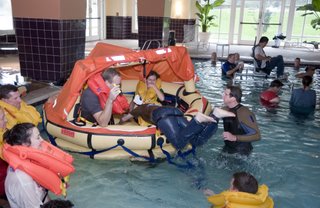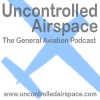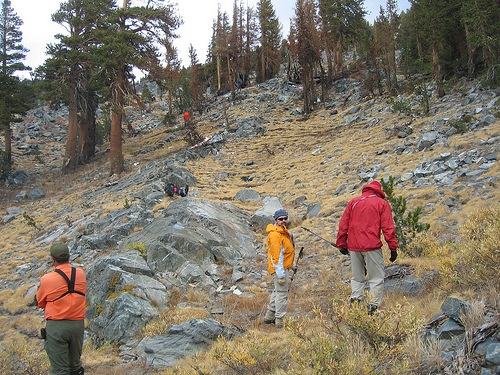The Ultimate Head Game -- Safer Piloting

KANSAS CITY -- You might mistake the crowd assembled outside the ballroom of the Hyatt Regency Crown Center for a collection of insurance agents, bankers, medical professionals or any other type of business people. Six-hundred souls, milling around the multiple tables of the Continental Breakfast and stands of Starbucks coffee dispensers, mostly 40- and 50-somethings, a good contingent of 30ish and more than a few whose years stretched into their 60s and, fewer, their 70s.
But the overwhelming presence of aviation-themed embroidery adorning the ad hoc golf-shirt uniform offered strong hints of the aeronautical nature of this gathering. Some of those stitched statements heralded the wearers' membership in a corporate flight department while others attested to the equipment they flew.
And despite the sponsorship of this event by one particular planemaker, the aircraft varied in origin widely and without regard for the name dominant on the banners welcoming pilots to the 12th Annual Bombardier Safety Standdown. This year's Global War on Error occured at a new location after a decade-plus in its hometown -- Wichita, The Air Capital.
The change in venue, however, portended nothing in the way of a change in focus -- the same focus of its former founder, overseer, sparkplug and team leader, Bob Agostino. Bob likely was the name most mentioned by veteran Standdown presenters and participants -- participants which included at least one other veteran of the Bombardier Flight Demonstration Team, the Learjet-based unit that labors long and hard to host this free four-day indoctrination in an oft-overlooked aspect of safe flight: the human aspect of safety.
When first conceived and executed at Learjet in 1997, the Standdown hosted six Learjet flight-deparment pilots, and the two-day focus as on preventable errors that contributed to preventable accidents.
Eleven years and 12 Standdowns later and that focus remains unchanged.
The scope, though, now reaches far beyond six in-house aviators to corporate and private pilots from across the spectrum and around the world. Six-hundred this year -- out of about 1,000 application. More than 550 came last and more than 500 the year before. Since Bombardier first took Standdown public 10 events back, attendance has soared -- and demand has long exceeded capacity.
The value -- the reason behind that demand -- stems from the non-traditional aspect of the training. Although simulators of sorts are involved, there are no Level D Sims instucting on the finer points of the dreaded one-engine-inop ILS to minimums in Level 3 weather; no discussion of mechanical failures or ship mechanics. No, the sims involved during the workshop-structured first day expose participants to smoke-filled cabin evacuation scenarios -- complete with rocking cabins and safe but irritating smoke. They also use sims of a sort to teach CPR skills, the use of portable automatic defibrilators, emergency oxygen, water egress from an overturned cockpit and the proper use of a liferaft.
Experts dominate the remaining three days, with lectures on fatique, on flight psychology, on the marks of an airman, the importance of judging correctly the runway conditions, stabilized approaches, even the importance of sleep cycle management and medical issues to help pilots stay safe and retain their certificates.
After attending as a journalist, as a photographer, my presence this year as a pilot provided me with an opportunity to focus on the training and lectures in a way difficult when attempting to "cover" an event. As in past Standdowns, though, I came away with knew and important knowledge and information, an appreciation for my own skills, and a welcome realization that as we age, we should never become the Old Dog for whom there are no New Tricks.
To that end, one of the true "closers" of this mindset has become a tradition over the past few years, a talk about the benefits and desireability of professionalism by a gentleman I've come to know a bit through our mutual attendance -- an aviator of unparalleld perspective, one Capt. Gene Cernan, Naval aviator, Gemini program astronaut, commander of Apollo 17 and the last human to leave a footprint on the Moon. Now in his mid-70s, Capt. Cernan continues to fly regularly in the Cessna 421 he owns and to advocate for general aviation and aviation safety.
The 12th Standdown, as it has in the past, left me as in awe as ever at the effort expended by the staff charged with organizing a couple of dozen presenters and lecturers, the briefcases stuffed with the documents we'd see in the presentations, and in providing a truly singular opportunity for several thousand aviators to learn more about their own minds and bodies and how to use them to conduct flights with fewer risks of harm.
Miraculously, Bombardier continues to offer, stage and support The Global War on Error at no cost to the participants like me. The cost of transportation and lodging covers the entry fee into Standdown. Continental Breakfasts; healthy lunches, a welcome reception and a safety-awards banquet are all included in the free admission. There's even an annual T-shirt and that smart-looking black briefcase adorned with the War on Error Standdown logo for us to carry around, proclaiming to the world our belief in safety and desire to be the best aviators we can be -- on our own time, no less.
Thanks to Bombardier, to Learjet, to NBAA, the FAA and the NTSB for throwing their support behind this event. Another thanks goes to to Bob Agostino and the mindset he brought and the team he brought to the party. And that brings me to those who deserve thanks the most of all: to the dozens of Learjet staff who work long, hard and selflessly to give us mortal aviators something unavailable anywhere else -- a chance to hear how we can improve our flying by improving our minds.
-- Dave Higdon
 UCAP Fodder
UCAP Fodder

